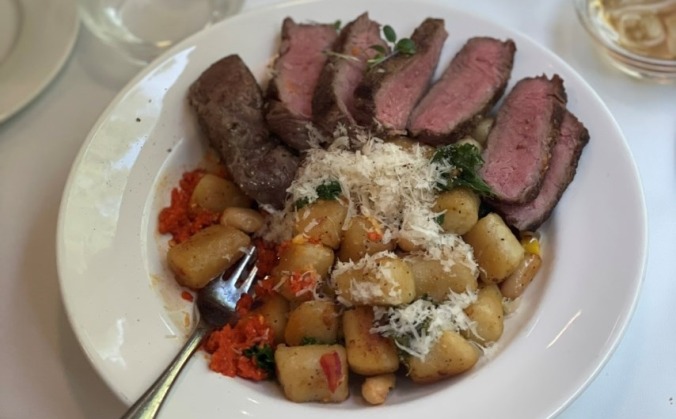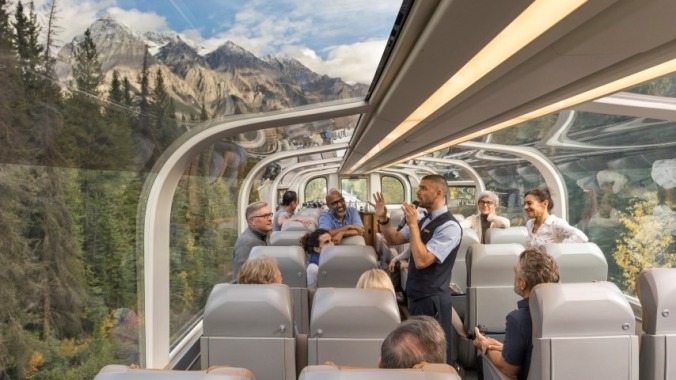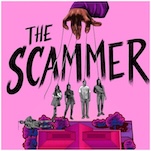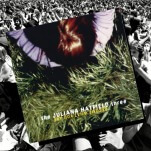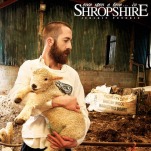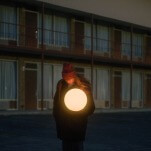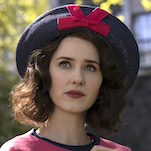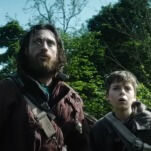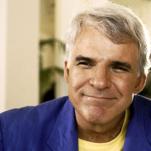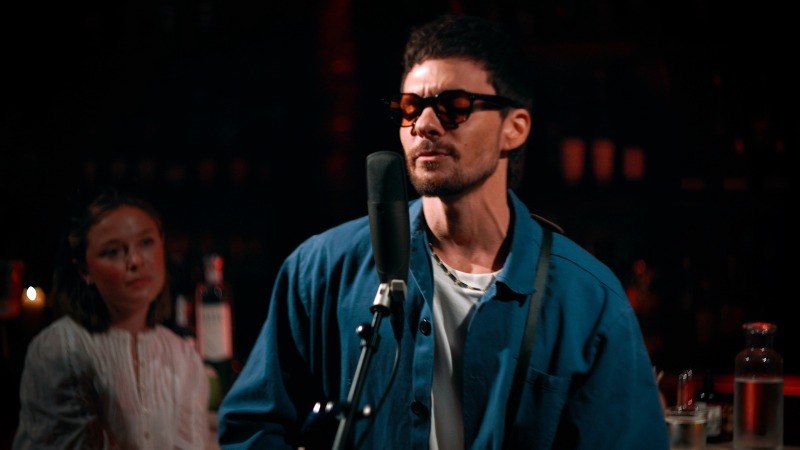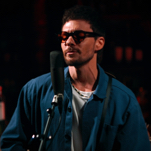The Rocky Mountaineer: When a Train Is the Destination
Photos by Garrett Martin, except photo of Rocky Mountaineer train at Castle Mountain and photo of GoldLeaf car courtesy of Rocky Mountaineer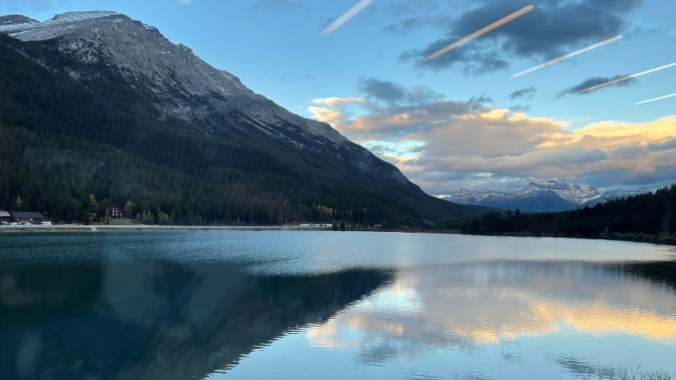
If you were born in the last, oh, century, and don’t live in a huge city with a big subway system, you probably don’t spend a lot of time thinking about trains. You’ve maybe never even been on a train outside of an amusement park. In America’s headlong rush to recreate itself for the automobile throughout the 20th century, the train system that used to criss-cross this country largely faded out of mind, reserved for industrial shipping and regional commuters. That’s a shame; anybody who’s ever used the rail systems in Europe or Japan knows they’re a fantastic way to travel, easier and more convenient than flying or driving, and often cheaper than either.
Trains don’t have to serve a practical purpose, though. Sometimes trains can be a destination in and of themselves, like a land-bound cruise ship that can only go in one of two directions. The Rocky Mountaineer, a luxury train that slices through the lush forests and craggy mountains of western Canada, is a sterling example of a train that exists solely for the sake of being a train.
Since launching in 1988, the Rocky Mountaineer has provided an unmatched view of the Western Canadian landscape to over two million guests. In that time it has expanded to four different routes, three in Canada and one American-based line that runs from Colorado into Utah, and has set the worldwide standard for luxury train travel. A recent trip on the First Passage to the West route’s top-shelf GoldLeaf service took me on a two-night journey from Vancouver to Banff. I’ve rarely felt this pampered or provided for on a luxury cruise ship or resort, much less on a train.
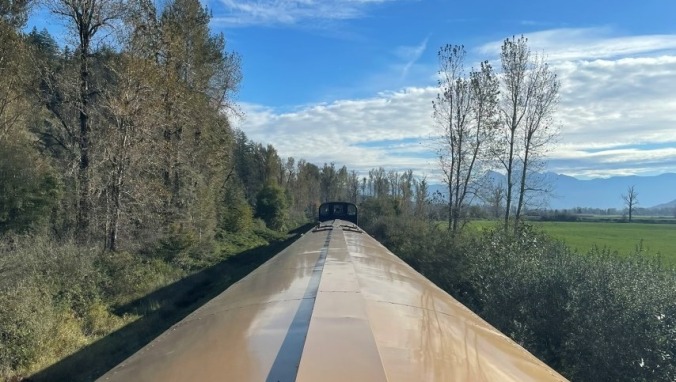
This particular Rocky Mountaineer route starts its journey in a train station on the outskirts of Vancouver. It heads north and east into the Rockies, cutting through British Columbia and Alberta on its way to Banff, a glorious mountain resort town inside Canada’s first national park. The two-day trek features a one-night stopover in Kamloops, a small city originally founded as a fur trading post in the early 19th century, with hotel room included as part of any Rocky Mountaineer booking. Departure, destination, intermediate stops: those are the basic facts necessary to any train voyage. With the Rocky Mountaineer, though, they’re less important than the time on the train itself. Even Banff, an unworldly natural wonderland that leaves a deep, lifelong impression on anybody fortunate enough to visit it, doesn’t overwhelm or distract from the memories of this train trip, especially in a GoldLeaf car. Our stay in Banff was merely the cherry on top of an already unforgettable vacation.
It’s almost a disservice to describe GoldLeaf, the more luxurious of the Rocky Mountaineer’s two service classes, with a comparison to air travel first class. Yes, this is the fancier, costlier experience on board the Mountaineer, but it goes so far beyond what any airline offers that you can’t really equate the two. Traveling in GoldLeaf must be what it felt like to travel first class on one of the grand old shipping lines of the 19th and early 20th centuries. Two attendants were always on hand throughout both days, ready to refill drinks, fetch snacks, provide historical and natural details about the lands we traveled through, and let us know when it was time for meals. With spacious seats, a private dining car, two daily meals prepared by the car’s personal chefs (three per car for GoldLeaf service, one for SilverLeaf), constant access to free drinks, and a transparent canopy that turns the whole car into a mobile observation deck, GoldLeaf service makes the journey almost too comfortable. It turns two day-long legs of travel into a lavish blur.
-

-

-

-

-

-

-

-

-

-

-

-

-

-

-

-

-

-

-

-

-

-

-

-

-

-

-

-

-

-

-

-

-

-

-

-

-

-

-

-

